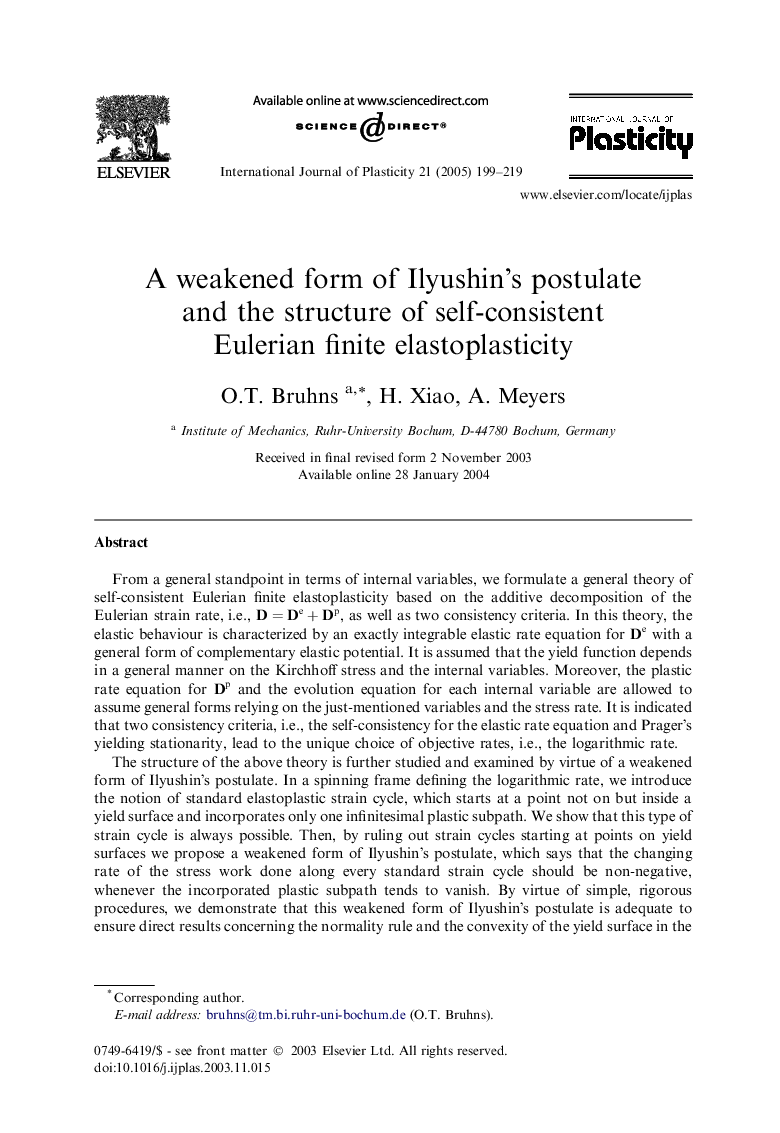| Article ID | Journal | Published Year | Pages | File Type |
|---|---|---|---|---|
| 9707250 | International Journal of Plasticity | 2005 | 21 Pages |
Abstract
The structure of the above theory is further studied and examined by virtue of a weakened form of Ilyushin's postulate. In a spinning frame defining the logarithmic rate, we introduce the notion of standard elastoplastic strain cycle, which starts at a point not on but inside a yield surface and incorporates only one infinitesimal plastic subpath. We show that this type of strain cycle is always possible. Then, by ruling out strain cycles starting at points on yield surfaces we propose a weakened form of Ilyushin's postulate, which says that the changing rate of the stress work done along every standard strain cycle should be non-negative, whenever the incorporated plastic subpath tends to vanish. By virtue of simple, rigorous procedures, we demonstrate that this weakened form of Ilyushin's postulate is adequate to ensure direct results concerning the normality rule and the convexity of the yield surface in the context of the foregoing Eulerian finite elastoplasticity theory. Specifically, with an exactly integrable elastic rate equation defining De, we prove that, in the space of the Kirchhoff stresses, the difference (DâDe) is just the gradient of the yield function multiplied by a plastic multiplier, and thus bears the very kinematical and physical feature of plastic strain rate. Furthermore, we prove that, in the space of the Kirchhoff stresses, the elastic domain bounded by each yield surface should be convex. The main results are derived in a self-contained manner within the context of an Eulerian theory of finite elastoplasticity, without involving issues concerning how to define intermediate stress-free states and plastic strains, etc.
Related Topics
Physical Sciences and Engineering
Engineering
Mechanical Engineering
Authors
O.T. Bruhns, H. Xiao, A. Meyers,
